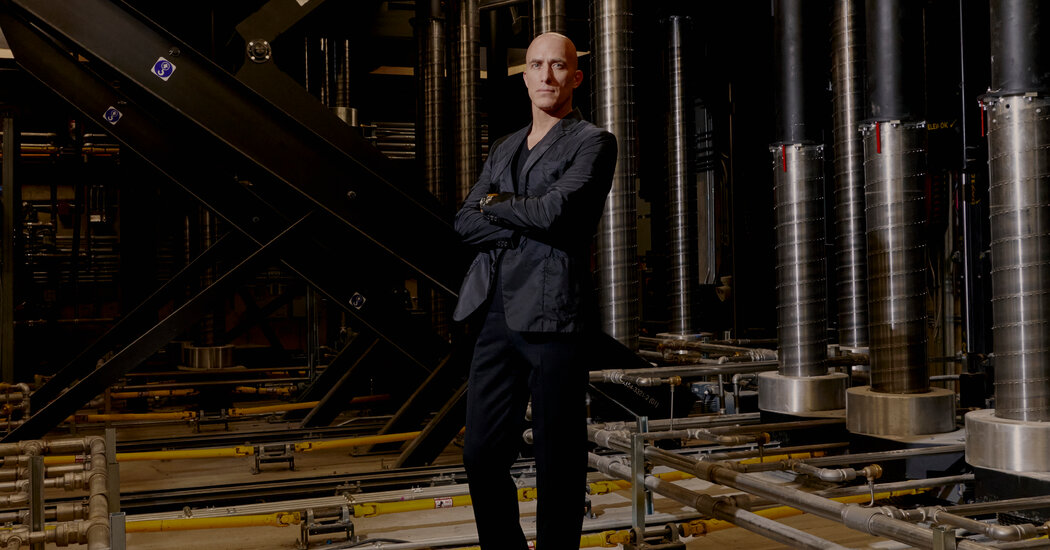At the Lindemann, a shimmering, fluted (and fluted again) aluminum curtain wall nods to the intricacy of its historic campus surroundings and evokes a billowing stage curtain disappearing into the ground. To avoid the challenges of the location — including vibration from a bus tunnel and an exceedingly large footprint on Brown’s modestly scaled campus — the firm scrapped its plan and started over, well into the process — convincing school leaders to use another site that was home to Brown’s history department: the 1872 Sharpe House, which was moved to another location. The firm created a raised, wedge-shaped glass-wrapped lobby that beckons visitors and glows from within at night.
These two buildings embody Ramus’s obsession with detailing and “exquisite restraint,” a term he uses to describe the work of one of his idols, the midcentury architect Gordon Bunshaft. Inside, their auditoria are advanced machines that can enable virtually any type of creativity — at a show’s earliest conception or during the performance itself. The Perelman’s three theaters (plus a rehearsal room) can be shifted and merged into 10 different proportions and arranged into 62 seating configurations via movable walls, blinds, stages, balconies, floors, and more.
The Lindemann has only a handful of configurations, but they can be transformed to accommodate wildly different uses — ensemble music, dance, theater, mixed media, cinema, narrative arts, spoken word. Ramus calls it one of the most automated buildings in the world. Even the connection between the performance space and the campus outside can change, via movable perimeter drapes.
The guts of these buildings look like futuristic factories filled with industrial mechanisms, used in unfamiliar ways: gantries, pullies, engines, hoists, steel tracks, bridges, and spiraling lift mechanisms. Ramus can rattle off adaptable supporting systems as if he were a mechanical engineer.
Pragmatic flexibility is another central pillar of Ramus’s story. His parents divorced when he was young, and between kindergarten and 12th grade he attended seven different schools across North Carolina, Virginia, and Washington State. This flexibility was sharpened at OMA, via undertakings like the Dee and Charles Wyly Theater in Dallas, a collaboration between OMA and Rex. Here, Ramus and his colleagues developed the idea of “presets,” like you see on a car radio, offering practical, preconfigured spatial choices. The Wyly theater had only four presets. Ramus calls the Perelman “Wyly on steroids.”
